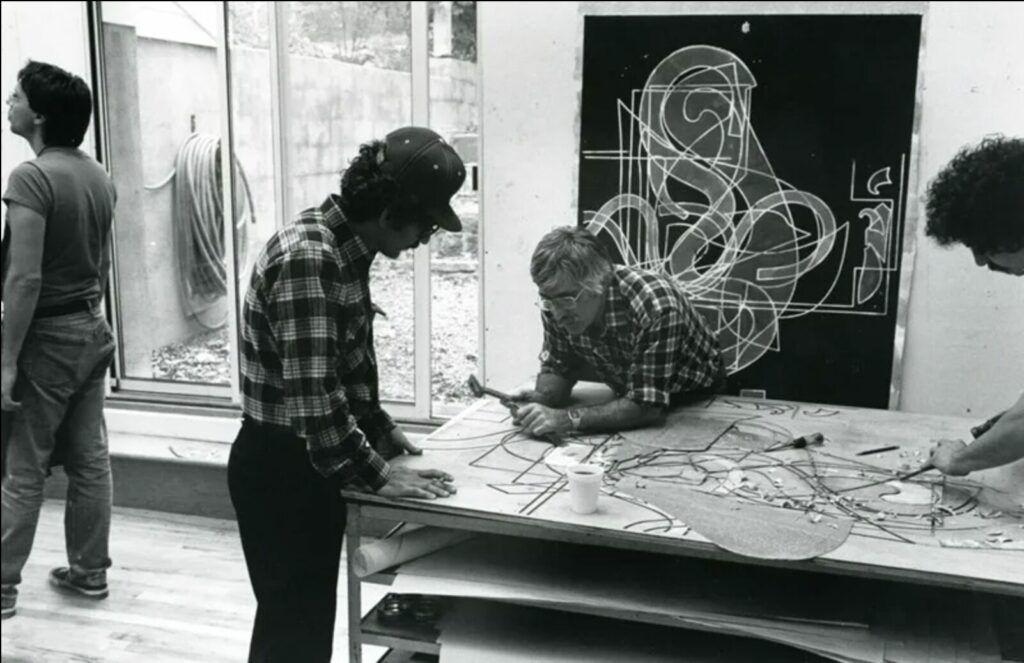
Frank Stella (1936-2024) had little experience in prints when master printer Ken Tyler urged him to try his hand at lithography in 1967. For many years after the artist used printmaking to experiment with existing ideas that he had been struggling to fully execute as paintings. However in 1982, when Stella began a series of prints, Circuits (1982-84) that corresponded with the development of a series of metal-relief paintings also titled Circuits (1980-84) he felt ‘a tremendous feeling of freedom … that I didn’t have to make prints after the paintings’.
The Circuits paintings rendered Stella’s recognizable geometric and gestural language (plus a curving new shape made using a Flexicurve draftsman’s tool) into planes that were painted, die-cut, and etched into corrugated aluminum and steel sheets and then assembled at different angles to create wall-mounted reliefs. The relief paintings became a prime foundation for the technical processes and formal concerns for the Circuits prints. Stella collected the scraps from the fabricator’s workshops, in particular the wood backing boards which were deeply incised from the manufacture of his reliefs and photo-etched templates from industrial manufacturing jobs. He then recut and assembled the materials into large multimedia compositions. These “found drawings”, as Stella called them, were inked and printed, resulting in a layered montage of textures that mimicked the appearance of traditional woodcuts or intaglio prints.

Pergusa Three, for example, includes sinuous tracks (printed from the original beechwood backing board used in the creation of the related relief painting), strips of photolithographic lace (industrially produced to be embossed on the borders of tablecloths), and etched magnesium plates cut from the scraps of the artist’s own reliefs. The blocks and plates were printed on extra-large sheets of handmade and hand-dyed paper.

The 16 works in the Circuits series are based on Stella’s life-long fascination with car racing and race tracks, and each print was named after an international race track that the artist visited in the late 1970s. Pergusa Three specifically references Autodromo di Pergusa, a race circuit around Pergusa Lake in Sicily, Italy. Pergusa Three is one of the most innovative prints the artist ever made and exemplifies a monumental turn in Stella’s artistic approach, dismantling the formal boundaries between media and adopting printmaking as a means of experimentation that could be developed concurrently with his paintings.
Courtesy of Susan Sheehan Gallery.
